
|
| Accept Cookies | Customize | Refuse Cookies |
Carlo Alfonso www.juzaphoto.com/p/CarloAlfonso  |
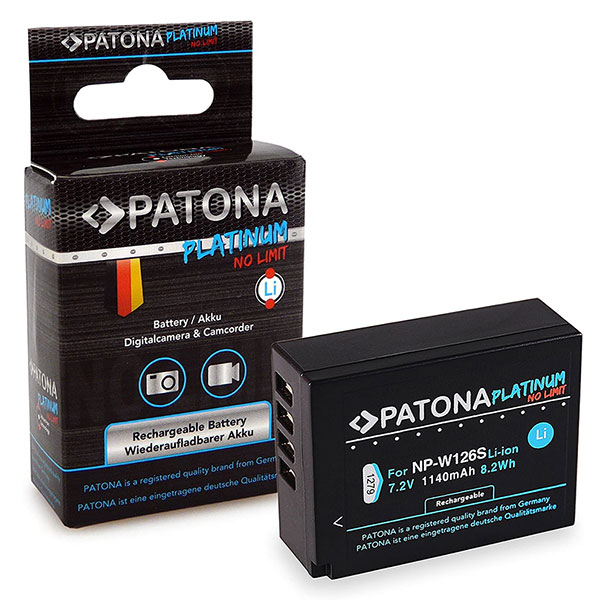 | Patona Platinum NP-W126S Pros: Price Cons: Slightly lower life and performance than original Fujifilm batteries. Over time they swelled to me too and I had to file them on both sides to be able to continue using them on X-T1 and X-T2 Opinion: I bought 2 a couple of years ago and after a year and a half they swelled to the point that it was difficult to insert or extract them in the camera housings. I solved the problem by filing them on both sides to be able to continue using them on X-T1 and X-T2. For the rest, they still work even if, over time, their charging capacity has almost halved. sent on October 11, 2023 |
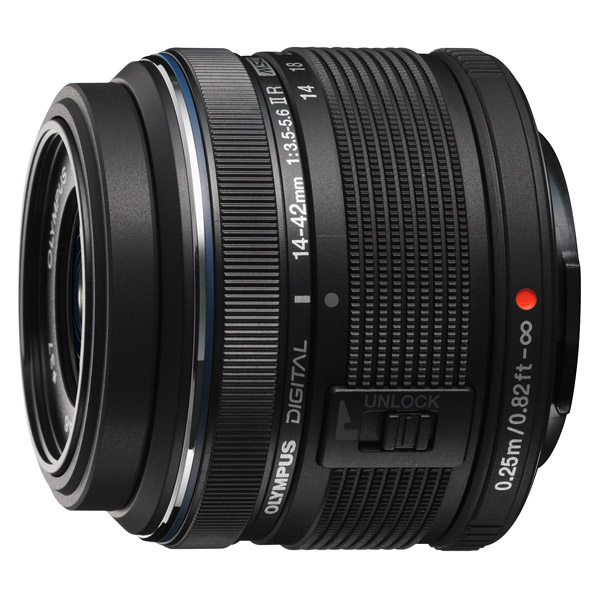 | Olympus M.Zuiko Digital 14-42mm f/3.5-5.6 II R Pros: Lightweight, relatively compact, economical (species used), good general yield at intermediate diaphragms. Cons: Unstabilized, relatively dark, hood to be purchased separately, AC and flare backlit Opinion: All-rounder optics of higher quality than expectations for a kit lens, especially when used between f. 8 and f. 11. Light and space-saving, it has the defect of not being stabilized and not having the hood supplied and this involves, in certain light conditions, chromatic aberration and flare. I replaced it with 14-150 f.4-5.6, which, with the same yield, brightness and operation, has the advantage of covering a greater range of long focal lengths. Honest goal, ultimately, with regard to the quality / price ratio, but that did not excite me as Paolowsky84, who reviewed before me. He even claims to have "printed professional-level photos with great satisfaction of customers who did not believe in a similar result seeing me photographed with a small small camera" but he has not published any photos taken with this lens, indeed, at the time of writing, he has not published any on this site. sent on October 17, 2022 |
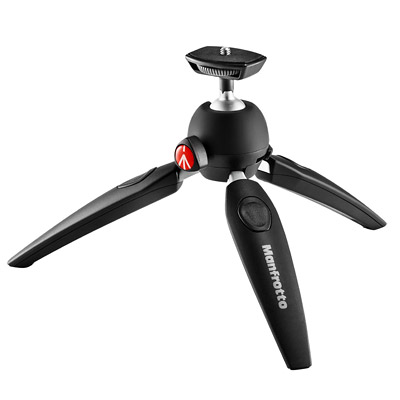 | Manfrotto Pixi EVO Pros: Lightness, size, portability. Cons: Nothing, if you are aware that this mini-tripod can not replace in all respects a classic tripod. Opinion: Lightweight, practical, convenient to carry especially on trips and excursions (fits in your bag comfortably or even in your jacket pocket). It is a valid alternative to go light without having to bear the weight and bulk of a "normal" tripod. You have to accept the compromises that this type of mini-tripod involves: low pdr (but it can be very interesting), relatively light equipment (max 1.5 kg between camera and lens) even if I, at home, I loaded up to 2.2 Kg. without particular problems. I always take it with me on excursions with the Olympus OMD E-M10 MKII or with the Fujifilm X-T2 and I have never had stability problems even with extended feet. sent on April 16, 2022 |
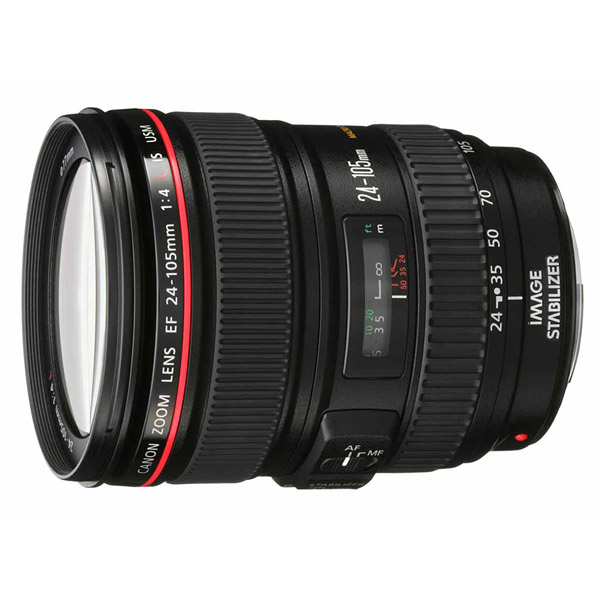 | Canon EF 24-105mm f/4 L IS USM Pros: Sharp, good focal range, stabilization, fast and silent AF, f. 4 at all focal lengths, price to be used Cons: Weight Opinion: Taken used at a good price (350 euros in conditions like new) surprised me for the speed of the AF and for the silence. Robust and, therefore, also relatively heavy, it has its strong point, in my opinion, in the fast and silent AF, as well as in the focal range that meets most of the needs with an optical quality very close to the corresponding fixed optics. Bright enough to be an f.4, it gives the best of itself between f. 5.6 and f. 11/f. 16, but also at TA it defends itself well, especially at focal lengths between 80mm and 105 mm. I found differences in quality output between FF (Canon 6D) and APS-C (Canon 100D and Canon 200D) sensors. Let me explain: I found a better yield on the small APS-C sensors, especially on the 200D, compared to that of the FF sensor of the 6D, perhaps due to the crop factor that favors the central area of the lenses. However, colors, microcontrasting and sharpness are at a good level with all these cameras. I have not found, so far, any permanent defects such as aberrations, distortions, flares, etc. that can also appear in certain situations at 24 mm. to TA and that cannot be corrected in PP. The AF is fast, almost lightning fast (especially with the 200D) and very quiet. I also used it on Sony A7 with the Sigma MC11 adapter, and even in this case it proved to be up to the situation: excellent performance without loss of functionality. The only real flaw can be considered the weight, which however goes to balance bodies such as the 6D or the 5D. Great as a handyman to go "light" and take home good quality shots. Recommended as long as you do not buy it (only used) over 350/370 euros. sent on October 15, 2021 |
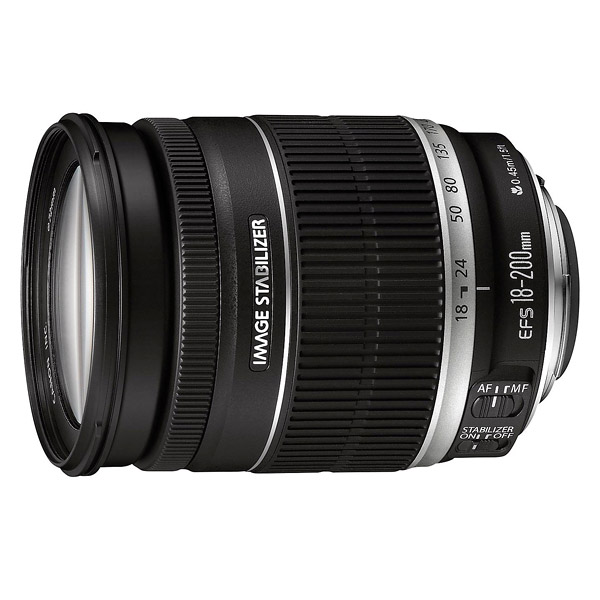 | Canon EF-S 18-200mm f/3.5-5.6 IS Pros: Focal excursion, Stabilization, fast and quiet AF, compactness at 18mm. Cons: Maybe the weight, the lampshop I had to buy aside, sins of ta sharpness at all focal points (but just close half stop, better than 1 stop), tendency to pump some grains of dust between the lenses Opinion: I read generally negative comments about this objective, or, at any case, comments that do not do him the right honor. I don't want to say that this lens is just a blade, but it still offers good image quality between f.8 and f. 11 to all focal points and, starting from f. 5.6, already from 18mm to 30mm. It is robust, relatively light, compact at 18 mm., handy, with an excellent stabilizer and a very fast and quiet AF. Ideal travel companion on APS-C SLRs, I found it good for both landscapes and portrait and also for street. I photographed trains running at 150 km/h churning out sharp, well-on-focus and well-"frozen" images even at 1600 ISO. The only flaw in the specimen I have in my kit is that, over time and with use, the zoom ring has hardened a bit in the intermediate focal points (between 80 and 135 mm) compared to other excursions (between 18 and 80mm the ring is fluid as well as between 135 and 200mm) to the detriment of the feeling of fluidity and that some tiny grain of dust has been sucked between the lenses irrelevant to the optical yield. For me he was an excellent companion for travel and excursions and I found it useful, if not indispensable, in those disengaged ceremonies such as exhibitions, events, trips, for souvenir photos and beyond; the fact that you do not have to change objectives when you do not have the time or when the footprint and weight of the corresponding fixes would be felt. sent on June 30, 2021 |
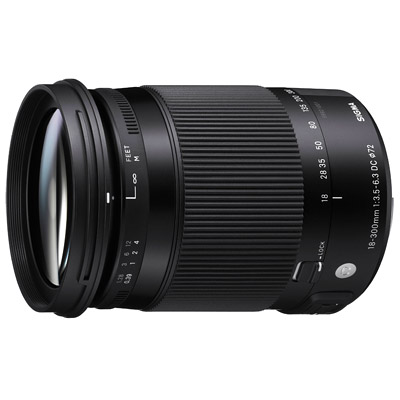 | Sigma 18-300mm f/3.5-6.3 DC Macro OS HSM C Pros: Light, compact at 18 mm., good stabilization, fast and silent AF, good macro magnification ratio, good focal excursion, good performance in relation to the type of lens, better than its direct competitors, possibility to mount focal multipliers Cons: Plastic, it stretches a lot during zooming, unsatisfactory edges at TA. Opinion: Good all-rounder with low weight and price, and good overall quality, better than other all-rounder zooms from other brands I've tried as well. I have the 18-200 EF-S Canon, which I feel a bit tight because of the reduced focal excursion and I have to attest that the Sigma I find even higher (slightly) than the original Canon and also the weight is slightly lower. The surprise was the discovery that, on Canon, it can be mounted on the Kenko Pro 300 1.4x and 2x focal multipliers while maintaining AF and stabilization with the first and only stabilization on the second (Canon 100D), while for qualitative results it is advisable to close the diaphragm to values around f. 11 to reduce the inevitable aberrations at the edges of the frame... but the image in the center is quite sharp and detailed even by shooting freehand because the stabilizer works really well. I know that many people will twist their snouts and cry out for scandal, which is that technically focal multipliers can also be used on this objective, making it even usable on FF (Canon 6D). All this must be considered, of course, in those occasions when you can not bring a whole photographic kit below and you want to have greater enlargements without having to crop the photos. sent on June 16, 2021 |
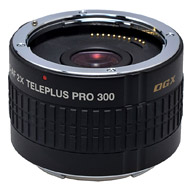 | Kenko Pro 300 DGX 2.0x Pros: Compactness, lightness, price, value for money, AF and IS maintenance even with > f.4.0 Cons: I haven't found any so far Opinion: I had the Canon Extender 2x II and, mounted with the 70-200 L f.4 IS USM, did not keep the AF, but only stabilization (as indicated by the House), and not only that: it was bulky and heavyer and only enthipped to this goal, among other Canon EF that I have in my kit. I decided to take this multiplier, bought used in excellent conditions in the physical store and with a guarantee of one year for 100 euros and immediately surprised me: lightness and footprint to a minimum, quality, combined with the 70-200 above, comparable to the original Canon II, and above all maintenance of the AF and stabilization. To my great satisfaction I also noted that it also engages all the other objectives with EF grafting while maintaining all the automatisms with these too. Obviously the Canon Extender 2x II I resold it to a guy who had the 300mm. f. 2.8 and the 70-200 f.2.8 with which it works excellently. sent on November 13, 2020 |
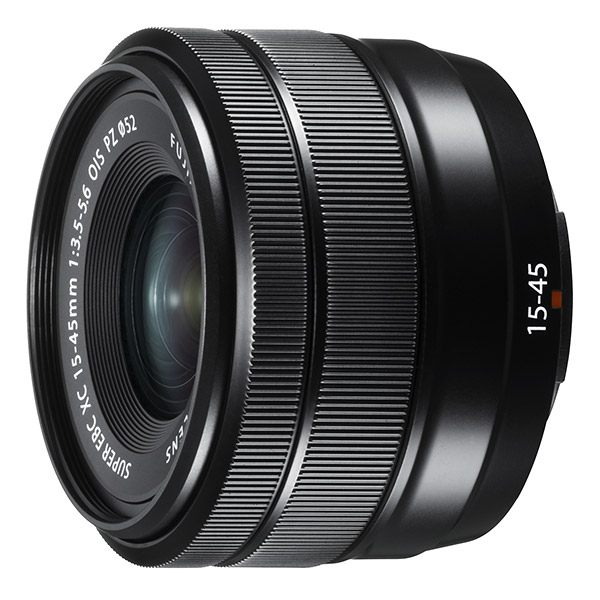 | Fujifilm XC 15-45mm f/3.5-5.6 OIS PZ Pros: Small, light, wide field angle, general optical yield, price (especially used), stabilization Cons: motorized zoom, a little dark Opinion: Taken used, for only 100 euros, in excellent condition from the kit a friend who bought the 16-55, I immediately found well as to general optical quality, color yield, sharpness and microcontract. Great angle of field which is similar to that of a 23 mm. F.F. format (that's why I bought it!). Great for general use, for panoramas, even for portraiture, it does not disappoint even in close-up photos (I also used it combined with automatic Meike extension tubes without problems and with good results, especially at the maximum focal). Despite the low brightness I find it very good even for street, maybe setting and fixing first the most congenial focal. The sore points, on the other hand, are the "power zoom" and the electric maf that slow down somewhat the respective operations compared to those carried out manually. sent on April 14, 2020 |
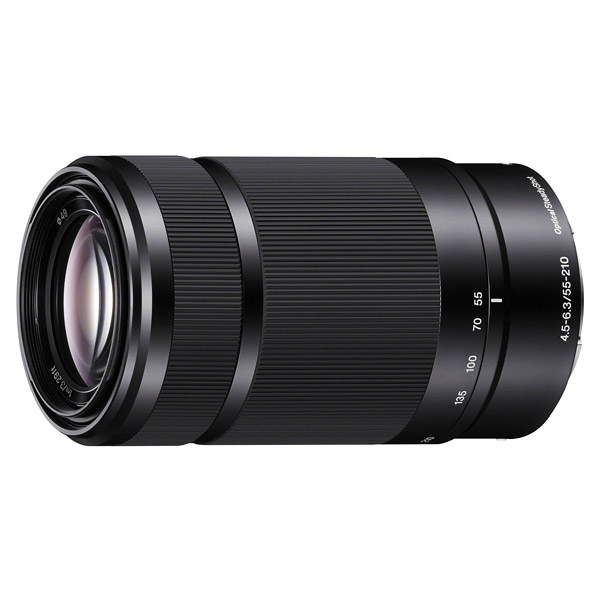 | Sony E 55-210mm f/4.5-6.3 OSS Pros: Lightness, compactness, speed and silence AF, stabilization, optical yield (from f. 8 onwards), solidity, price Cons: Dark (but on the ML does not notice it almost), optics not excellent under f. 8 to all focal (poor to T.A.!), Opinion: Taken used for 110 euros to complete the endowment of my Sony a5000, I was immediately surprised by the speed and quietness of the focus. The stabilization also surprised me by giving me still shots at the maximum focal (about 315 mm. in equivalent shoals on F.F.) with shooting times up to 1/60 freehand. Disappointing at T.A., it becomes unobtrusive at f. 8 and good over f. 8 up to f. 16-f. 18; then it expires a little bit because of the diffraction. The brightness of the environment also has a bit of an impact on the yield of the lens: in good light conditions, excellent shots come out, in low light or in the absence of contrast (grey or foggy sky) do not always come out decent shots, not even mounted on tripod. I also used it in combination with extension tubes, for close-up, but here the result was almost always disappointing because the goal, in itself, does not express that microcontrast that only the real macro goals offer. For trips and excursions, when you need to go light, however, it gives nice satisfactions and therefore I recommend it as long as you do not pay it more than 140/150 euros. sent on March 02, 2020 |
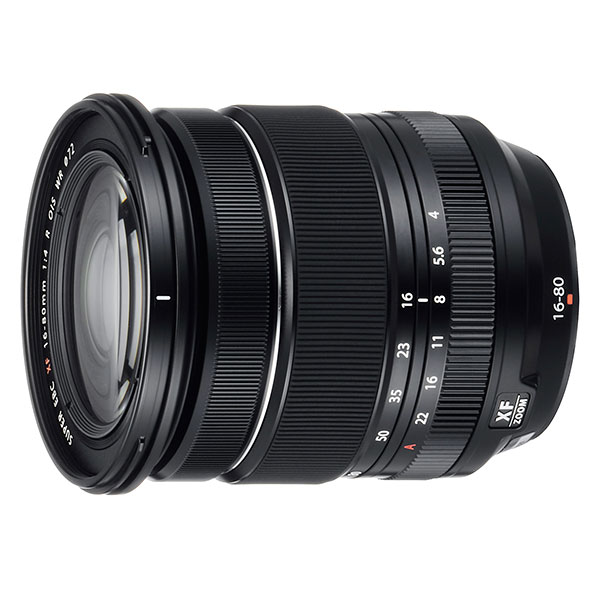 | Fujifilm XF 16-80mm f/4 R OIS WR Pros: Construction, compactness, speed and precision maf, stabilization, lampshade Cons: Optical yield does not excel at the most open diaphragms (it is better between f. 8 and f. 16), evident distortion between 16 mm. and 22 mm., slightly soft between 60 and 80 mm. Opinion: I was undecided whether to replace the old "all-rounder" 18-55 f. 2.8-4 with this brighter and more "extended" zoom or with the 18-135 f. 4-5,6 and then I tried the specimen of my friend. Good feeling of robustness, a little less weight and clutter. Excellent focus speed even with little light and excellent also the stabilization that allowed me "stop" shots at 80 mm with times of 1/25". The result, however, disappointed me a little because the most open diaphragms (f. 8 down) I did not find the same homogeneity between the center and the edges of the image; 16 mm. 22 mm. there is a bit of distortion, much more than the 18-55 which is more correct and sharper. It is not an optic store but if one buys it to take advantage of its brightness and - of course - the most open diaphragms can face some disappointment. Basically, I decided to keep the 18-55 not deeming the value for money of this zoom convenient. I'd say eight and a half. sent on January 24, 2020 |
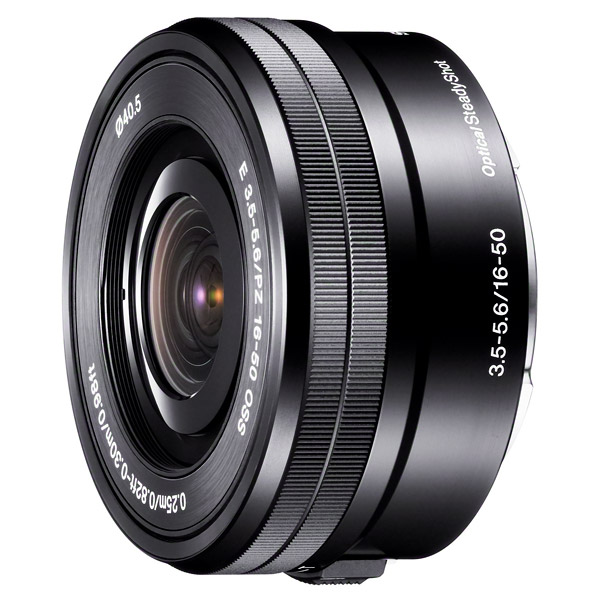 | Sony E PZ 16-50mm f/3.5-5.6 OSS Pros: Light, compact, stabilized, cheap, good overall optical yield especially from f. 5.6 to f. 11, good value for money. Cons: Slow zoom, lack of lampshade (to be bought separately), optical yield does not excel at T.A. at the slightest focal, relatively dark, only electric zoom and a little slow. Opinion: It's the all-rounder optics of the kit with the Sony Alpha 5000 that I took some time ago. It allows me to tuck the camera into my pocket due to its small size and featherweight. I did not find in this lens all those optical defects that other users have reported, if anything I detected some slight operational difficulty such as slow ness to zoom (electric zoom only), MAF slowness with poor light, some parasitic light due to the lack of the lampshade, but on the plane of optical rendering I have nothing to say. It is a lens that honestly performs its work, even mounted on extension tubes to make macros or close-ups. Good general sharpness, especially between f. 5.6 and f. 11, good color yield. Sure, it's not a blade like certain L Canon series lenses, but the photos you can take with this lens are more than dignified. I can only think that users who consider this lens to be like a bottle bottom have a faulty specimen, because my experience with this "piece" is satisfactory. I would add, after reading the comments following mine, that in fact even some of my acquaintances complained about the yield of this zoom, however, after trying my specimen, they had to recognize that in fact it was the one in their possession that was not satisfactory, otherwise mine; doing the test of the nine and that is by mounting their 16-50 on my 5000 I have to recognize that their 16-50 has a worse yield than my counterpart. The only thing that unites these more "poor" lenses is that they are sold in combination with the 6000 series cameras. Finally, some other friend who owns the 5000/5100, like me, never complained about the performance of their 16-50 kit. sent on November 30, 2019 |
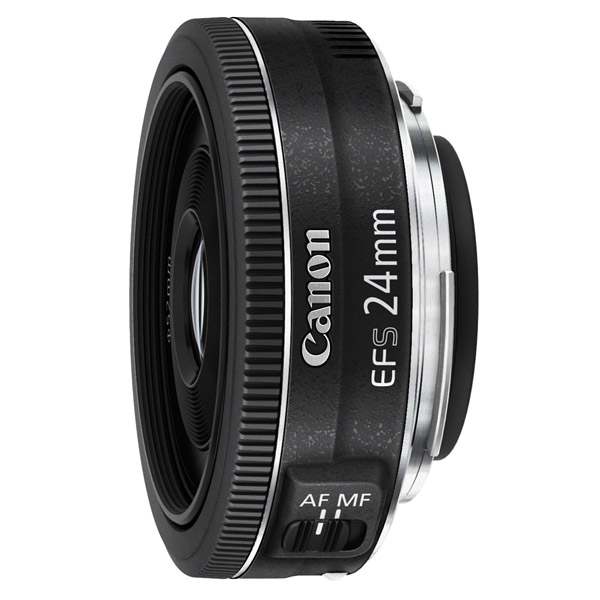 | Canon EF-S 24mm f/2.8 STM Pros: Price, lightness, compactness, very sharp, MAF fast and quiet. Cons: I can't find any... perhaps the lampshade to be taken apart, but many Canon targets have this "defect". Opinion: I associate myself with the comments of other users adding that I am using it with extreme satisfaction on mirrorless APS-C Fujfilm by adaptor and without any loss of functionality and quality, indeed; on these cameras, the field angle is equal to that of a 36 mm. but the quality of this optics remains unchanged. Wrongly, in the past, I had twisted my nose in front of this lens ideally associating his small physical thickness with an equally small optical thickness... and I was wrong!!! I'm glad to have it and especially to use it. sent on November 17, 2019 |
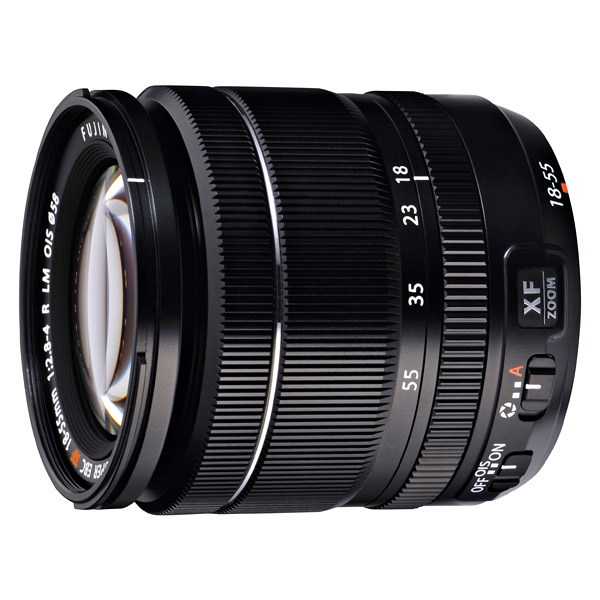 | Fujifilm XF 18-55 f/2.8-4R LM OIS Pros: Lightness, brightness, construction, AF, diaphragm diaphragm diaphragm diaphragm, stabilization, optical and chromatic rendering, good sharpness even at T.A. Cons: To find the fur in the egg the lampshade that is annoying to assemble and disassemble, a little vignette (but not always) to T.A. (but just close by half a stop. Opinion: Target of the X-T1 kit that took my son who very kindly makes me use it. It is a very good "all-rounder" lens and - I agree with other users! - this is not the usual "plastic" lens of the other kits. It's all metal (yet it's light), very bright, very handy and well stabilized. Excellent optical and chromatic rendering. Great microcontrast. To keep and use, above all. sent on August 28, 2019 |
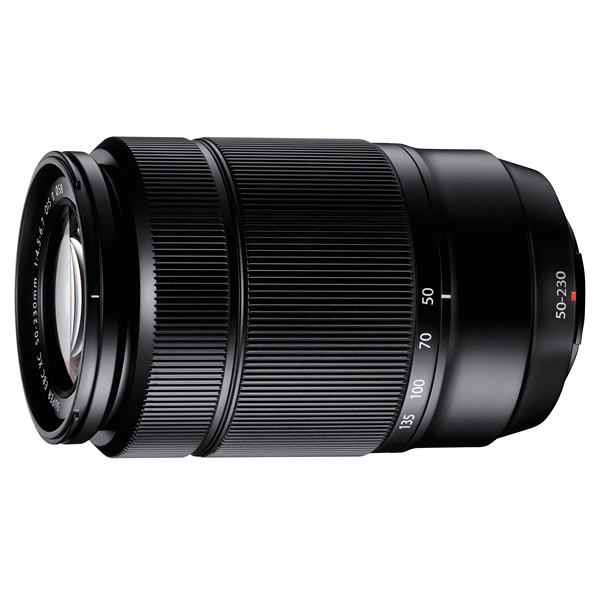 | Fujifilm XC 50-230mm f/4.5-6.7 OIS II Pros: Weight, stabilization, compactness, handling, price, sharpness, supplied lampshade, autofocus. Cons: Diaphragm selectable only by camera, a little too plastic (but then it would be heavier), relatively dark. Opinion: I'm using it with my son's X-T1, which paid him off at 149 euros. I was surprised by the speed and precision of the AF in good light conditions while in the dark or with little light it struggles a little and it is preferable to sevelare by hand. Even for close-up the hand sealing is better than the automatic one, at least on the X-T1. Excellent stabilization: I made perfectly focused and sharp shots at maximum focal (230 mm. equivalent to about 350 mm. on f.f.) freehand with crazy times of 1/52 degrees, 1/46 degrees and even 1/42 degrees, but normally you get good freehand photos with crazy times of 1/52 degrees, 1/46 degrees and even 1/42 degrees, but normally you get good freehand photos with crazy times of 1/52 degrees, 1/46 degrees and even 1/42 degrees, but normally you get good freehand photos with crazy times of 1/52 degrees, 1/46 degrees and even 1/42 degrees, but normally you get good freehand photos with crazy times of 1/52 degrees, 1/46 degrees and even 1/42 degrees, but normally you get good freehand photos with crazy times of 1/52 degrees, 1/46 degrees and even 1/42 degrees, but normally you get good freehand photos with crazy times of 1/52 up to 1/125 degrees without having to hold your breath. The yield, in terms of sharpness is very good, especially from f. 8 to f. 16 while at T.A. I could notice a slight drop of light at the edges of the frame. Maybe it's a little dark, but it's not an obvious flaw because the viewfinder and mirrorless monitor return an adequate view (mounted on a reflex you would notice). In conclusion, I can say that I would not have expected such a good optical performance from such an economic objective. sent on August 06, 2019 |
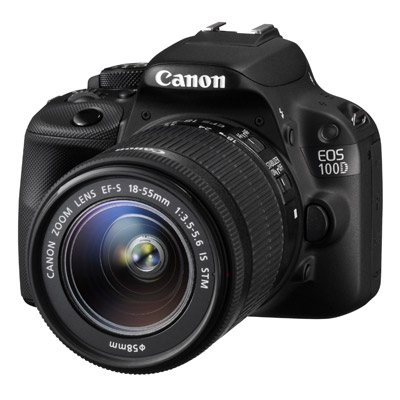 | Canon 100D Pros: Small, light, handy, touch-screen, silent shutter, good JPEG files and excellent raw, built-in flash. Cons: High ISO seal, battery life, not easy grip for big hands, non-orientable monitor. Opinion: Socket used at €180. With 9,000 shots and lens of the kit to use it on trips, excursions and small trips, it turned out to be a real surprise in spite of the small and plasticous body. The controls and the touch respond very well and the camera returns very good files, especially with the 17-40 L and Col 70-200 L IS USM. It surprises also the general rendition of the Small and light handyman 18-55 of the kit that is more than dignified (I expected worse). Excellent files up to 400 ISO, from 800 ISO up starts to see some correctable noise in P.P.; From 3200 up the noise is a bit excessive for my liking, but you can still make free-hand shots with little light, especially in uniformly lit environments. The camera, the 18-55, the 50mm f. 1.8 and two spare batteries enter comfortably into my purse and accompany me with satisfaction on trips, small trips and excursions. When I go out just to take pictures, instead, (and I do not want to get the weight of the F.F.), I put it in a small shoulder strap with the 17-40 L USM and the 70-200 L IS USM and the results are still more than satisfactory. Obviously this camera is not comparable to the performance of the Canon 6D, but I honestly recognize that some shots made to the same subjects, on tripod, with the same lenses and focal, first with the 100 D and then with the 6D but Croppati of about 1.5 ( So at the APS-C sensor level) They proved to be qualitatively equivalent because I have not been able to find obvious differences. sent on May 31, 2019 |
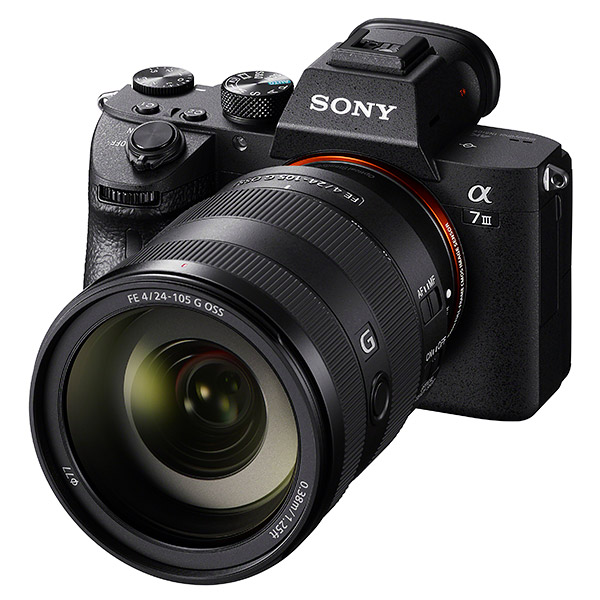 | Sony A7 III Pros: Quality of the files also in JPEG. Low noise at high ISO. Stabilized sensor. Speed and precision AF. Tilt Monitor. Cons: Weight, general ergonomics, menu a little too arzigogolato, but above all sensor subject to easily get dirty between a change of lens and the other long exposures. Lack of a built-in flash. Opinion: I tried the specimen of a friend of mine photographer by profession who made me use it in his exits more than once. The impression of solidity is well supported by the weight that, however, in the long is felt. Despite having an AF almost instantaneous and very precise, I have found difficulties in dynamic situations in which I have never had problems with the Canon 6d, which weighs more or less than the Sony but is better distributed. The Sony A7 III is great for quiet or low-dynamic photos where you have all the time to compose, focus and shoot. Good high ISO tightness, with intense and brilliant colors but from 6400 up the noise begins to become evident even if within the limits of acceptability and the chromatic scale tends to flatten a little. Terrible then, as in all the mirrorless, the sensor that is exposed to dust in the optical changes and also this sensor manages to capture enough in the few seconds that it takes to change the target, then forcing to retouch the photos "polluted" From the footprint of more or less subtle dust grains. I do not understand why manufacturers have not expected to be able to close the blinds (automatically or manually) when you change the lenses... It would be a good solution to greatly reduce (if not even reset) the dust on the sensor. Personally I am not thrilled with this camera, nor of the other mirrorless that I have tried so far (Sony A7, Sony A7II, Sony A6000 and Sony A5000), but I attribute this impression to the fact that I still can not detach the eye from the viewfinder of reflex Which I still prefer by far. I mean, it's a matter of habit. But only to a certain point because, then, when I mount the tele and I find myself having more difficulty to manage it with a mirrorless rather than with a reflex (which usually does not create problems) and when you have to be careful not to take dust to the sensor or to clean Too often, then it becomes more difficult for me to detach myself from old habits. sent on February 21, 2019 |
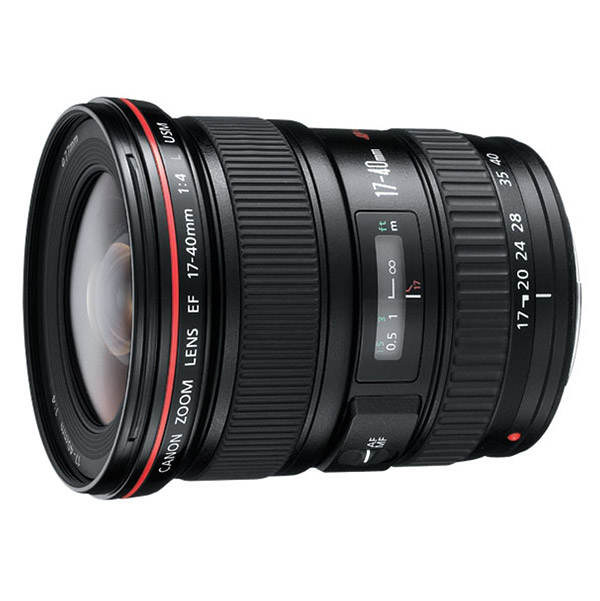 | Canon EF 17-40mm f/4.0 L USM Pros: Weight, dimensions (without lens hood), AF silent and Fast (USM), F. 4.0 constant, good overall yield also at the edges between F. 5.6 and F. 11, used price. Cons: Bulky lens hood, but a lens hood for this lens could not be less cumbersome, slight drop in sharpness at the edges under F. 5.6 (but without dramas), lack of stabilization, but stabilization on such an objective is useful, not indispensable (and Then it always depends on personal needs). Opinion: I have this lens for about six months, got used to €350., and I'm very satisfied with it, so as to use it as standard zoom also on the Sony Alpha 7 via Sigma MC11 adapter. Recommended for those who, like me, do not have special requirements that require the presence of a stabilizer or greater brightness of the lens. sent on January 25, 2019 |
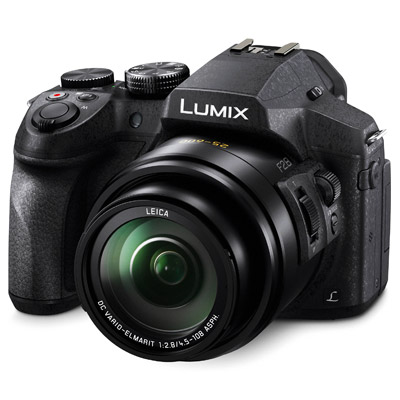 | Panasonic Lumix FZ300 Pros: Max constant aperture of the lens at f 2.8 for the entire focal range (but F. 2.8 at 4.5 mm. It's not the same as 25 mm. On F.F. because the depth of field is considerably different, well greater than 4.5 mm. which-although on this camera has an equivalent field angle and a 25 mm. -It's still a 4.5 mm. And even at 108 mm., the depth of field is greater than that which one might have with a "true" 600 mm.). sharpness, color rendition and very good Microcontrast (but from 400 ISO onwards did not satisfy me). Crisp Video (for the few I've done). Hood as standard. Adjustable Monitor. Good stabilization even at the maximum focal. Cons: Poor image quality above 400 ISO, but I think it is also a problem that arises from the small size of the sensor. Reaction times (ignition, delay in shooting) a little too long. Slow Zoom. A bit heavy to be a bridge. Disappointing electronic viewfinder and low-readable monitor in high-brightness conditions. Battery life not Excellsa. Opinion: Excellent for those who want to take pictures while traveling and do not want to have the footprint of a reflex with relative optical park. For the rest, while providing good quality images but only from 100 to 200 ISO, it did not seem so "amazing" and "superb", but simply honest, and, anyway, at least for me, not exciting so much so that after about six months of use (I took it in 2016) , I resold it, dissatisfied, to take a compact pocket Canon (sensor size almost equal-4.5 x-, less focal length-only 5x!-and brightness variable from F. 2.0/4.5) but with a general yield and handling and maneuverability Higher ISO's definitely better than the FZ300. Given that in photography the important thing is to have fun (even with the disquisitions of technical, optical and physical nature) and, therefore, to find satisfaction with the photographic instruments suitable for their own inspiration, personalities, etc..., I would say-but without any intention Controversy-that I disagree with those who claim that they are "better 12mpx on a 1/2.3 sensor than 20MPX on a 1" sensor because this statement in part is commented on by itself since the ratio is 5, 6x and then also because my experience with cameras with sensors Verses (1/2.3, 1/1.7, APS-C and F.F.) showed me "de visu" that already the 12 mpx of the old Canon 5d (old) are qualitatively and significantly higher as the rendering of images (both JPEG and RAW) compared to the same MPX smaller sensors , not only, but also compared to the 20mpx of the more advanced sensors 1/2.3. The proof lies in the fact that, otherwise, I would have kept the Panasonic and I would not have bought the Canon compact camera, now supplanted by a mirrorless Sony APS-C, and the Canon 5d and 6d F.F. SLR cameras then. sent on January 09, 2019 |
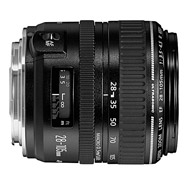 | Canon EF 28-105mm f/3.5-4.5 II USM Pros: Compact, lightweight, fast and quiet AF (USM), discretely bright, sufficiently wide focal length, good sharpness, nice blur, almost imperceptible distortions and vignettings, front lens that does not rotate during zooming. Cons: Lack of stabilization, lens hood to buy apart. Opinion: Second-hand purchased for €80. To go light on the Canon 6d (the 24-105 F. 4.0 weighs and cluttered enough more), I'm using it as a fixed zoom on the Sony Alpha 7 instead of the original 28-70 which is darker and less extensive as the focal range. Sometimes I also use it on the Sony Alpha 5000 (APS-C) on which the field angles correspond to a 40-150. Both on Canon and on Sony, I return files with good sharpness and a fine micro-contrast, coupled with a pleasing chromatic rendition even if at the short focal times I seem to notice a slight tendency towards warm tones. This lens, frankly, surprised me for the overall yield, for handling and for the speed of focus, but also for the construction that I think is quite solid. The specimen I purchased, then, does not present any game of the barrel because, evidently, was little used (or well kept) by the old owner. The only drawback of this lens (as of several other Canon optics) is the lack of the lens hood, to be purchased apart from cheap prices. sent on January 02, 2019 |
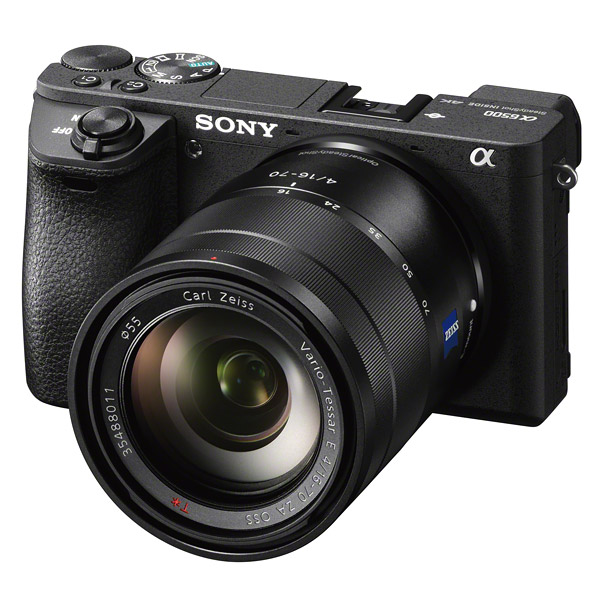 | Sony A6500 Pros: Footprint Cons: Price Opinion: Tried in the shop out of sheer curiosity, but I was not thrilled. I'm just wondering if it's really worth buying this mirrorless APS-C when, at the same size/weight, and with less money you can buy a mirrorless full frame like the Sony Alpha 7 which is more performant, or, at the same expense, the Sony Alpha 7 II. Maybe for the 16-50 of the kit that is compact and lightweight, but at this point you can still opt for the previous and more compact/light versions a6300 and a6000 that are more manageable and have roughly the same functions and the same quality of image. sent on January 02, 2019 |
 | Yashica ML 50mm f/1.7 Pros: Price. Cons: Too vintage. Opinion: I agree with Leo45. I had this lens when I photographed in analogue with the Yashica FX-D quartz and then with the Contax 139 quartz on which I had before the Planar 50mm f 1.7 and then the brighter one F 1.4. I can therefore bring back my experience in relation to the analogue field. The 50 mm Yashica ML F 1.7 had almost similar performance to the Planar Zeiss 50 mm. 1.7 T *, but I emphasize "almost". At the intermediate diaphragms (between 5.6 and 11 to understand) had an almost similar yield so that on photos printed from negative films I was difficult to find big differences... but with the Diacolors Kodachrome 25 and 64 ASA (then there were ASA and not yet the Iso) The differences came out all and the 50 mm Yashica, although behaving quite well, gave a lot of the step to the homolog Zeiss: Distortions and vignetting were more obvious while microcontrast, sharpness and color rendition significantly lower if Compared to the same shots made with the Zeiss lens, especially at the extreme diaphragms (for fans of photographic technicalities were published at the time MTF curves and other measurements and laboratory tests carried out on the objectives and I remember that even from these comparisons the Zeiss lens came out with the laurel wreath). Once purchased the Planar F 1.4, then, I yielded the other two lenses because the latter I found it even more performant and, in my opinion, still remains the best 50 mm. Analogue of Zeiss home. The only attempt to use Contax/Zeiss optics on digital cameras I did on the Canon 450d using a special adapter, but the results were disappointing, even with the Planar 50 F 1.4. Today, perhaps things have changed and it seems that these old goals can live a second life on some of the latest digital cameras even though I happen to see and hear conflicting opinions and experiences in this regard. sent on December 30, 2018 |
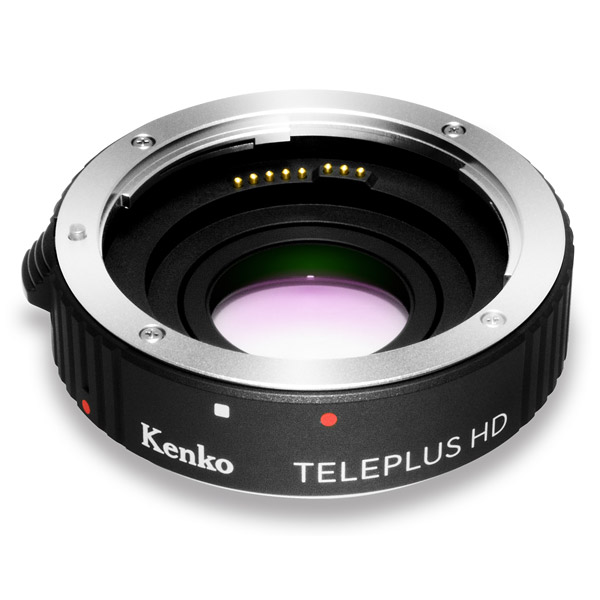 | Kenko Teleplus 1.4x HD DGX Pros: Lightness, compactness, price (especially second-hand), functionality. Cons: I haven't seen any so far. Opinion: A good multiplier - in my opinion - at a reasonable price, to have those few mm available. in more than one focal that sometimes doesn't hurt. Canon's counterpart costs a bang, is more bulky and is not compatible with all Canon optics but only with some. This here, on the other hand, matches almost all optics with Canon EF and EF-S attachment (some EF-S optics are not compatible) without affecting its functionality, focus and optical rendering, also correctly transmitting all EXIF data. Wanting to find the hair in the egg I can only add that I found it slightly soft at full opening on the 70-200 f. 4 L IS-USM Canon at 200mm, but just close half a stop and the hair in the egg disappears. Wanting to better specify it I'm using it with satisfaction on the Canon 6D (F.F.) after using it without problems on the Canon 600D (Aps-c) also combined with the 70-300 f. 4-5.6 IS USM of Canon, at 50mm. macro f 2.5 and 24-105 L IS USM f. 4, and sometimes as well with the 28-105 IS USM, without finding any play in the grafts. The specimen in my possession I took it used for 70 degrees. by a friend who changed his system and who also had a great time. sent on December 30, 2018 |
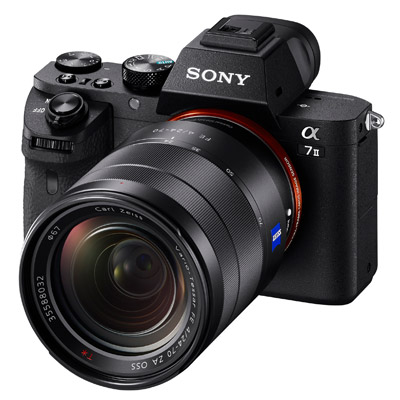 | Sony A7 II Pros: relatively unwieldy. Good dynamic range. Held high ISO (over 6400 does not satisfy me though). Possibility to use optics of other brands with the appropriate adapters. Sensor stabilization. Cons: Negligible battery life (also download to camera off). Sensor that gets dirty easily especially during the change of the lenses (but the manufacturers have never thought about the possibility to close the blinds when you change the lenses to protect the sensor of the mirrorless?). Autofocus not particularly fast and, at times slow and uncertain. Little intuitive menu for those coming from Canon or Nikon. Lack of a built-in flash (as a light of clarification). Opinion: I took it on probation from a friend for a few days, to see if it was worth replacing it at my "old" A7. Apart from some slight improvement over the previous version, I did not seem to notice significant improvements in the things that matter: the autofocus is slow and uncertain and, at times, goes up and down without finding the point of focus; The monitor is poorly readable in strong light and/or backlight conditions, while only the viewfinder seems slightly more readable than the A7. The weight is greater and feels, while the controls are arranged in a different way from the A7 and, perhaps, are more intuitive and ergonomic, but I, by now, I am accustomed to those of the A7. Noise over 6400 ISO (sometimes also from 1600 up), as on the A7. The quality of the images is good, even in JPEG, as on the A7, compared to which no known differences. The battery is hard and no 250 shots, a little less than the A7, and to get there I had to save the maximum on the operation of the monitor by turning off the vision of the image taken and excluding the continuous AF. Warning: I found that even on camera off there is a significant battery consumption; In fact, after a night of Unuse, the newly recharged battery and the 100% charge, when the camera was switched on, after only a few hours, showed a charge level of 93%, that is to say that 7% of the charge has evaporated, presumably to feed The internal clock (if there is). The continuous AF is not at all fast and reactive and is not suitable, therefore, for very dynamic shots, as well as on the younger sister. The sensor has caught dust between a lens change and the other and the cleaning function of the menu sensor has not been always effective and efficient (it would be enough to be able to close the curtains of the shutter when you disassemble the lenses to protect the sensor !). Also missing in this model a built-in flash that could be comfortable in certain situations. The greater weight and versatility almost identical to that of the younger sister, have made me withdraw from the pious intention to take this camera to replace the old A7. I will assess whether it is worth taking the A7III, after having duly tested it. sent on November 24, 2018 |
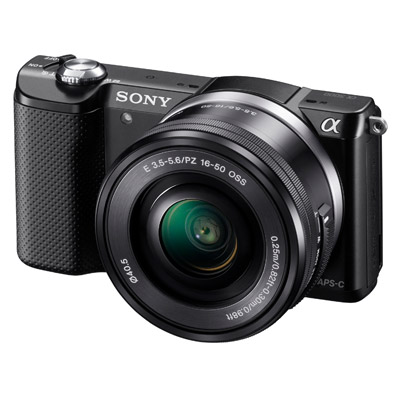 | Sony A5000 Pros: Small, compact, lightweight, pocket-sized, solid, tilting monitor, good dynamic range, jpeg file quality, nfc and Wi-Fi connectivity, focus peaking, battery life. Built-in flash. The kit's lens (16-50) small, light and good performance (although it lacks a traditional dial to zoom). Great stabilization. Ability to use optics from other brands with the appropriate adapters. Cons: Slow turn on and re-ignition. Maf not particularly fast and at times decidedly slow. Holding high ISO (over 800 ISO too much noise). Raw not exciting. Recharge battery directly into the machine body that prevents its use during the operation. Sensor prone to getting dirty easily. Lack of internal sensor cleaning device. Lack of a scope for all those situations where it is difficult to look in the monitor. Opinion: Great mirrorless to always keep in your pocket so you don't miss a single shot. Good image quality as long as you don't want to pretend to shoot in extremely dynamic situations or with little light setting more than 1600 ISO. Great controls that can be selected from the menu. I have added to the kit only two automatic Meike extension tubes found on Amazon at 16 euros. that I use for great macro photos, recently the Sony 55-210 and a pocket-sized mini for long exposures and the whole thing goes quietly in the pockets of the vest. For exposures up to 1/15 of a second I successfully risked freehand shooting, which says a lot about the good stabilization of the camera. I used it, indeed I use it, even with the 28-70 Sony f. 3.5/5.6 of the A7 kit, with better results than on the FF even if the angle of the field becomes that of a 45-105. Excellent yield also with canon lenses coupled through the Sigma MC11 adapter that maintains all the performance of the objectives; it's strange to have the 24-105 L IS USM f. 4 with this little one hooked, but the results are really amazing, as well as with the lighter Canon 28-105 f. 3.5/4.5, especially if there is no need to focus quickly (but this also applies with Sony optics). You need to be very careful not to get the sensor dirty when changing the optics because it is a real vacuum cleaner (better turn off the camera and wait a few seconds before changing lens, so the sensor slims down and does not attract grains of dust). sent on November 23, 2018 |
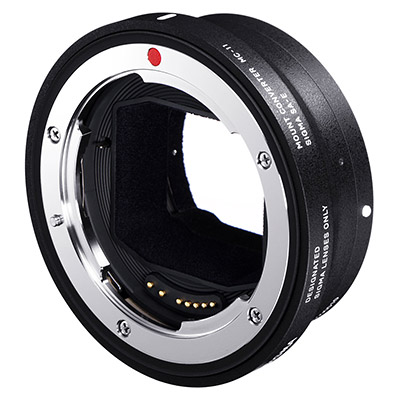 | Sigma MC-11 EF/Sony Pros: It works fine (in my case with Canon L-series Optics and EF-on Sony Alpha 7). Cons: I do not see (maybe the price, but if you have the patience to search the net, you can find it also new at an acceptable price: I paid €150. New with official guarantee Italy). Opinion: It is an accessory with the right value for money that allows you to use other brand targets on cameras of different brands without (or almost without, depends on lens and body machine) loss of functionality or quality. I am using it with great satisfaction on Sony Alpha 7, on which I can mount the Canon lenses. The functionality and quality of the canon lenses has remained unchanged, as if they were used on canon cameras. I also add that the added thickness of the adaptor on the machine body, reduces the possibility of annoying dust deposits on the sensor, when you change the lenses, compared to the original Sony lenses that-at the time of the gearbox-expose more The sensor directly to the external environment. sent on November 10, 2018 |
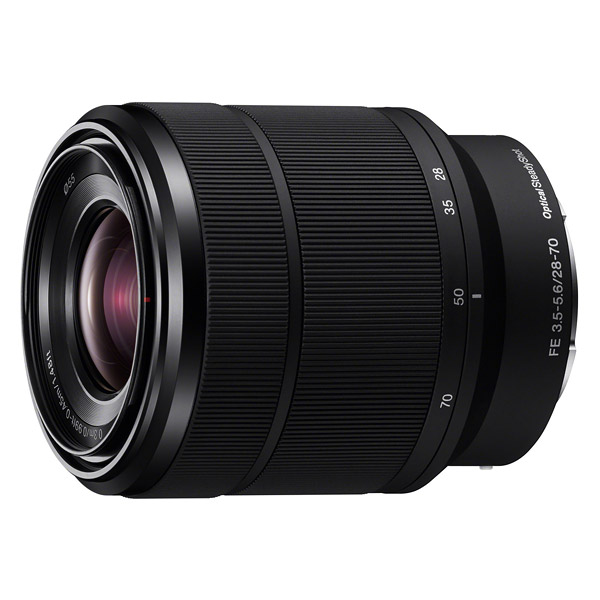 | Sony FE 28-70mm f/3.5-5.6 OSS Pros: Lightness, Price (€50. Difference between camera new only body and new camera col 28-70), Lens hood, stabilization, possibility to use it also on the Sony APS-C mirrorless e-mount. Cons: brightness, general optical rendering at Extreme diaphragms and "long" focal lengths (better on APS-C). Opinion: Light, but plasticous and not very performanant. I got it paired with the Sony Alpha 7 for only €50. of difference in more than the machine body alone. The yield is dignified only at the intermediate apersions (8, 11, 16) and at the short focal lengths, but between 60 and 70 mm the edges suffer from sharpness, distortions and aberrations (partly correctable in PP). The low light is not noticeable in the monitor or viewfinder but it is to invalidate the blur that is not very pleasant. Good for general use and as a travel optics. There is a minimum "macro" focusing distance, so it is impossible or difficult to photograph small objects (flowers, etc.). It works great and makes it much better with the Sony e-mount mirrorless APS-C cameras (alpha 5000/6000 etc.) as the reduced-size sensor only exploits the most central area of the lens and no sharpness problems at the edges of the frame and Even obvious distortions to both the short and long focal lengths (on Sony APS-C The angle of field is equivalent to a 42-105 in F.F.). sent on November 01, 2018 |
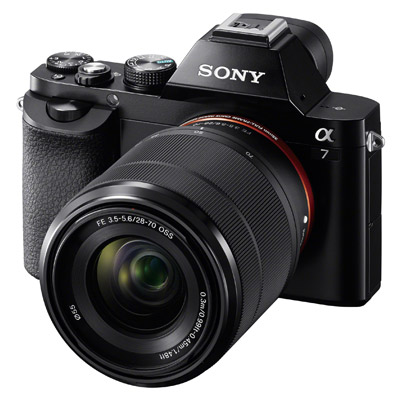 | Sony A7 Pros: Lightness, manageability, minimum dimensions, general ergonomics, excellent quality of the files also in JPEG, with good general dynamic range, adjustable monitor, current price. Possibility to use Canon optics (also Nikon, Sigma, etc.) with the various adapters that are around: Commlite, Sigma, Metabones, Viktrox, etc. The adapter Commlite-the cheapest-I was disappointed and I replaced it immediately with the Sigma MC11 that performs very well its work keeping all the functions of the lenses (Canon in my case). Cons: Excessive noise starting from 6400 ISO (and in some cases already from 3200 ISO). Sensor subject easily to get dirty. Lack of a built-in flash (such as Shadows light). Lack of stabilizer on the sensor (but maybe it would weigh more... See the A7 II). AF at times slow, or uncertain, or inaccurate even in good light conditions. Low battery life (max 300/350 shots new!) that you also download to camera off. Uncomfortable battery charging system (directly to the machine body). Electronic viewfinder not always at the height of the situations (backlight, photos of moving subjects). Difficulty or inability to use the camera in manual with The Flash (dark viewfinder and/or monitor). Update the post stating that after 6 months of use and about 8,000 shots I gave it away to return permanently on the reflex, because I was not fully satisfied. Opinion: sent on October 31, 2018 |
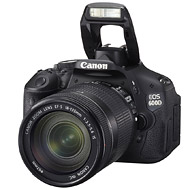 | Canon 600D Pros: Size, weight, adjustable screen, live-view, good battery life, good JPEG and RAW files (the last ones are well-workable in p.p.). Cons: High ISO tightness, already quite noticeable noise at 1600 ISO, few AF points, sometimes insufficient burst. Live-View Autofocus is not always very fast and accurate. Opinion: Great entry level. Light, manageable, intuitive, practical. It is a complete camera that shows some limit only to high ISO and sequences of shots. I had it, Satisfactorissimo (well 2 camera bodies replacing the Canon Eos 450d and 350d), for several years before moving to FF (6d) But I can say that the 600d performs very well its task although, as generally all APS-C, it pays the price of the sensor more PICC Ol. sent on October 07, 2018 |
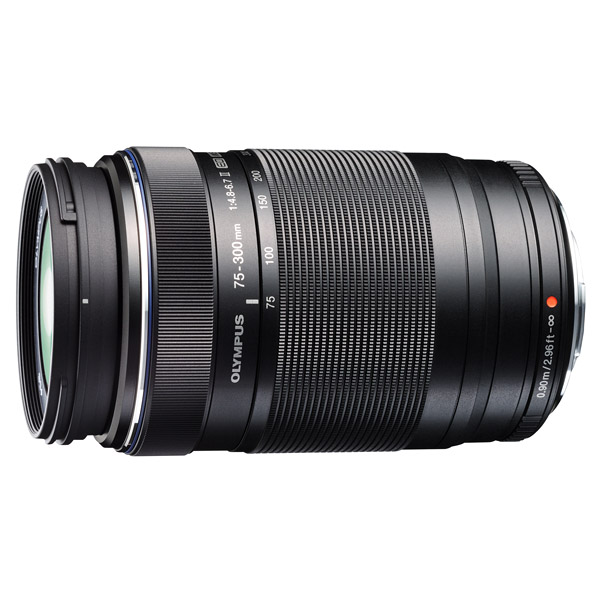 | Olympus M.Zuiko Digital ED 75-300mm f/4.8-6.7 II Pros: Only the weight, for the rest is better the 70-300 and F. 4.0-5.6 which is brighter and more incisive, even if you need to mount an adapter ring for Micro 4/3. Cons: brightness, image quality acceptable only between F. 8 and F. 11 (but expires over 220/250 mm.!), focusing problems in low light conditions (obviable with manual focus, but is annoying), lens hood to buy apart. Opinion: Nothing exceptional except the compactness and lightness. It is a dark tele zoom and not very easy to handle in low light conditions; The focus becomes critical in these conditions and you have to opt for manual focus. The quality of the images is lower than that of the "brother" 70-300 and that is definitely brighter and better performing (although heavier and bulky) and that, moreover, does not cause the same problems of focusing with low light on micro 4/3 despite The adapter. Better take it used. sent on October 01, 2018 |
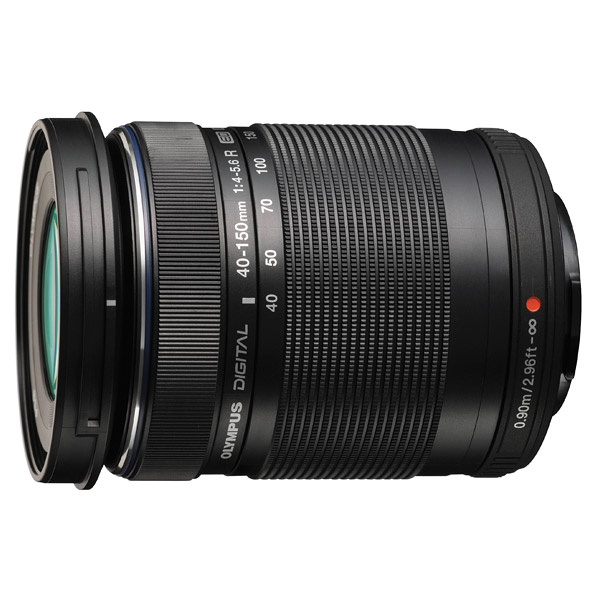 | Olympus M.Zuiko Digital ED 40-150mm f/4-5.6 R Pros: Weight (light), footprint (minimum), sharpness from 5.6 up (over 100 mm from F. 8!) but still discreet at T.A., price. In short it is a good lens even if it is not a real excellence. Cons: I can't find it. Maybe the brightness, but it would weigh more and cost more (see EZ version, for example that weighs double and is brighter than just half diaphragm, almost and does not solve the problem of MAF difficult in low light conditions) Opinion: Practical, light, discreet. I'm taking him to the purse with the 14-42 machine body. The auto focus suffers a little bit in low light conditions, but just set the manual focus and you're done. Great for going light, traveling, for Street View, trekking. Very manageable so the stabilization of the camera was almost unnecessary and often exclude it completely to the advantage of battery life. For those who want more (and can or want to spend more) there are the focal (almost equivalent) versions of the "Pro" or the most cumbersome FF. sent on September 22, 2018 |
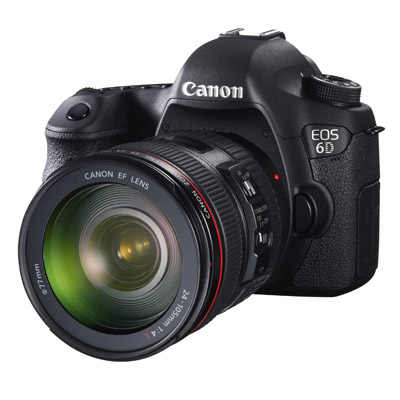 | Canon 6D Pros: High ISO seal. Central AF fast and accurate. Quality of the files (also in JPEG), but depends very much on the optics used. Battery life (without active GPS). Wi-Fi. Cons: Weight and footprint (but it's a full frame). Monitor fixed. Lack of a built-in flash. Opinion: I have this camera for 6 months and, coming from the APS-C, I have to say that I made a leap of quality... but I would have expected more to read the comments of other users. The shots made so far (both RAW and JPG) with this camera (Canon EF 17-40 F. 4 USM-Canon EF 24-105 F. 4 IS USM, Canon EF 50 mm. Macro F 2.5 and Canon EF 70-200 F. 4 IS USM), albeit better than those made with the Canon 600d , did not make me particularly enthusiastic about the results (maybe it is my fault that I do not know yet to use it). Yet the camera is manageable, accurate, with good high ISO (up to 25600 at night) and responds well to small changes in settings (sharpness, contrast, saturation). The quality of the files (low ISO) seems slightly lower than those obtained with the old Canon 1ds MARK III. The photos published by other users (evidently well worked in P.P.) do not reflect my experience with this camera, even in post-production of RAW files (but even here it may be my fault if I can not make good p.p.). Even the HDR function has not particularly excited me, returning images slightly less flat than those taken without HDR. Compared to the Canon 600 D you feel the lack of a tiltabile and adjustable monitor, useful for when you use the live view, as well as you feel the lack of a built-in flash, to lighten the shadows or in those situations where a flash is comfortable. Exposure meter (especially the spot) and AF are accurate. After 6 my use and a few thousand shots (5-6 thousand about) I feel I give a final vote of 8.5. sent on September 04, 2018 |
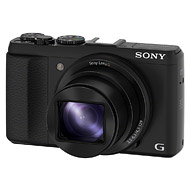 | Sony HX50V Pros: Quite compact and light, simple and complete menus, focal length, RAW, good image definition at 80/100 ISO, but without exaggeration with the zoom: after 5x, in fact, the images are too much artemade or full of noise. Information on the screen. Cons: Unreadable screen in full light. Images too much artemade over the 400 ISO or with zoom over 5x. The battery will charge plugged into the camera, so when charging the camera is unusable. Opinion: Good companion travel/excursion provided you do not expect too much. If you want higher quality and do not want the weight of an SLR, you should aim on a mirrorless with interchangeable optics. I always carry it with me in my excursions, but if I want some nice photos I leave it at home and I take the weight of the FF with lots of tripod. The photos published by other users do not correspond to my experience with this camera, which is dignified yes, but not as performanant as you can see from the images of this column... especially those made to the maximum focal excursion. Even the RAW snapped with this camera and then processed, I have never returned any images comparable to those published by users who claim to have obtained with this compact Sony. I own another compact, Canon, just 12 Mp and 5x zoom that returns images in JPEG (and of course RAW) significantly better than this that boasts even 20. sent on August 27, 2018 |
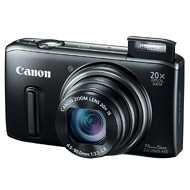 | Canon PowerShot SX260 HS Pros: Lightweight, compact yet not too pocket-sized, versatile, handy, decent macro position, good resolution up to 20 mm. About, then the quality drops but not too much, good image stabilization even at the highest focal length and slow shooting times (even 1 / 25th at the maximum focal point, free-hand, no support) Cons: Zoom slowness, difficulty focusing in low light conditions, shutter release imperceptibly late but still delayed, no RAW recording, minimum aperture limited to f. 8.0 for all focuses, apparent noise above 400 ISO Opinion: Great travel camera, hiking, hiking, hiking. He does his job well by giving back detailed and well-contrasted images, but not comparable to those obtainable with a reflex equipped with at least two lenses, but all in all, more than acceptable, but it is the price for those who can not or do not want to get weight 'Bulk of a more powerful equipment. Falling in fresh water a couple of times has always been revitalized after it has put it to dry in the sun, having immediately removed battery and memory card. It is great to be able to preview - with the live-view system - the images taken in the manual (with timers and diaphragms chosen by the user). Great image stabilizer that has allowed me panning images and "sparkling water" with unimaginable times (1/25 ° at the highest focal length !!!), obviously with very firm hand, but you succeed. Very robust and resistant to small bumps or shocks. Clear noise over 400 ISO, but 100 ISO lAnd images are very sharp. sent on June 26, 2017 |
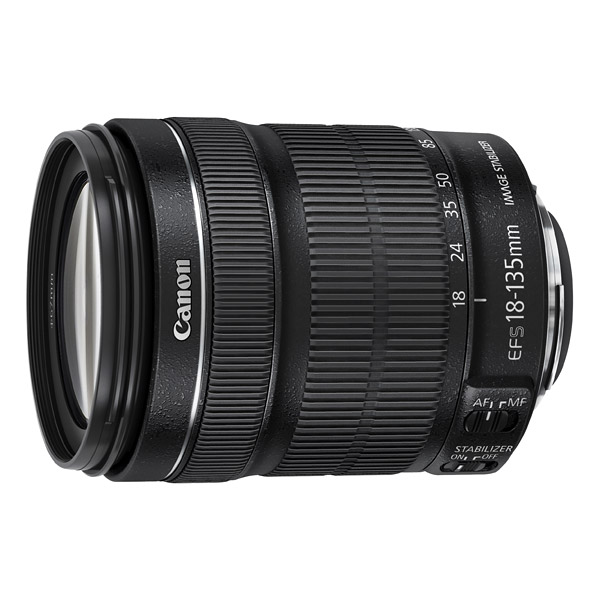 | Canon EF-S 18-135mm f/3.5-5.6 IS STM Pros: Value, AF fast enough though noisy, zoom range, light weight, stabilizzazione.rn Cons: Dim (but it is an all-rounder), it lacks the scale of distances, not exceptional sharpness between f. 3.5 and f. 7.2, slight vignetting at TA, dust accumulates in the barrel, questionable mechanical construction. Opinion: I used it for more than three years during which he gradually accumulated dust inside the front lens, up to give me a curious problem: a 18 mm. the camera reads 44 mm. and Aperture 5.0 instead of f. 3.5 as it should be. I used it with good satisfaction as a handyman, especially in meetings and events where he revealed to the occasion ... a little 'less in photographs of rural and urban landscapes. Okay as a travel lens disengaged ... ie holidays, travel in a group, and so on. To those who wish to achieve real photographic reports during their holidays I would recommend the excellent 15-85 because it combines the versatility of a handyman also an excellent optical quality. sent on March 03, 2017 |
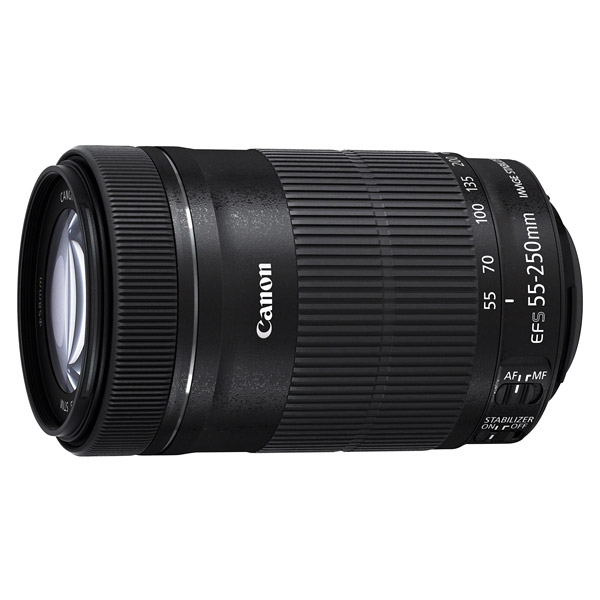 | Canon EF-S 55-250mm f/4-5.6 IS STM Pros: quality / price ratio, lightness, zoom range. Cons: not outstanding optical performance, vignetting at the edges to TA Opinion: Purchased in kit disappointed me right away for the poor optical performance in terms of contrast and sharpness; I would have expected something more, honestly. Lacking even the hood sold separately. Only the AF and the stabilizer found them rise to the occasion. I sold it almost immediately to take the 70-300 USM. sent on March 03, 2017 |
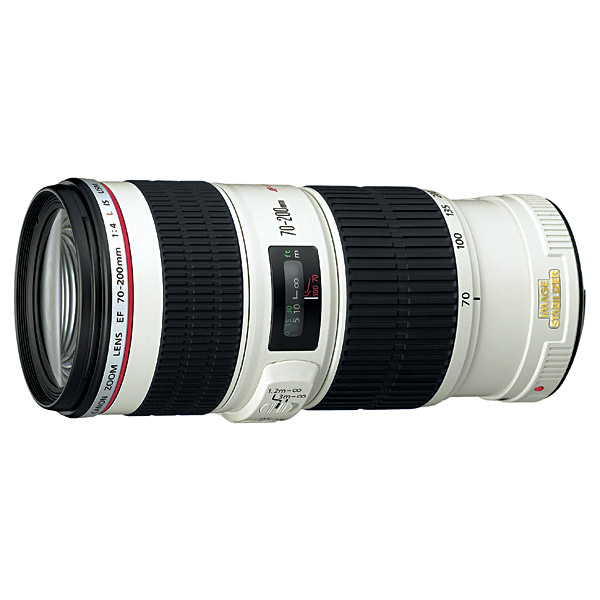 | Canon EF 70-200mm f/4 L IS USM Pros: Exceptional quality, very fast and quiet AF, very valid stabilizer even up to 4 stops, lightness, focus and internal zooming that keep the size of the lens unchanged. Cons: Perhaps the white color that makes it very flashy, the paralight a little cumbersome and the price of the new that is not quite within reach of all pockets. Opinion: Exceptional optics for chromatic rendering and sharpness. Great for landscapes, but also for portraits and sports photos as long as you do not search for close-ups from 50 meters away. If it were black it would be more discreet and less flashy, but then those canonists who "pull it" could no longer pull it easily. I've been using it for 2 years and I'm very happy with it; taken used by a friend who bought himself (blessed him!) the lens counterpart f. 2.8 (stunning, but heavier!). sent on March 03, 2017 |
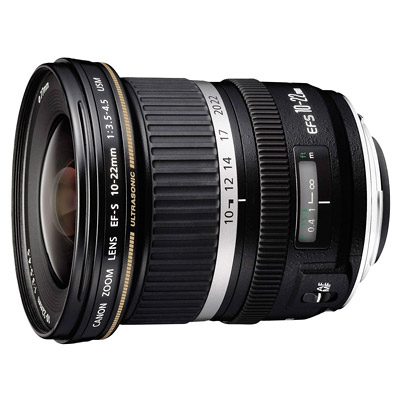 | Canon EF-S 10-22mm f/3.5-4.5 USM Pros: color quality, sharpness, lightness, easy handling. Cons: Hood sold separately. Opinion: I expressed a vote of 10 votes since there are no means, but in fact I wanted to vote 9.5 because the edges, high openings (3.5-5.6) it does not seem as sharp as the center. From f.8,0 onwards there is no difference. Fast, AF (USM) quiet and reliable even if in a perspective like that serves relatively; often, in fact I put a hand flare for maximum depth of field. sent on March 03, 2017 |
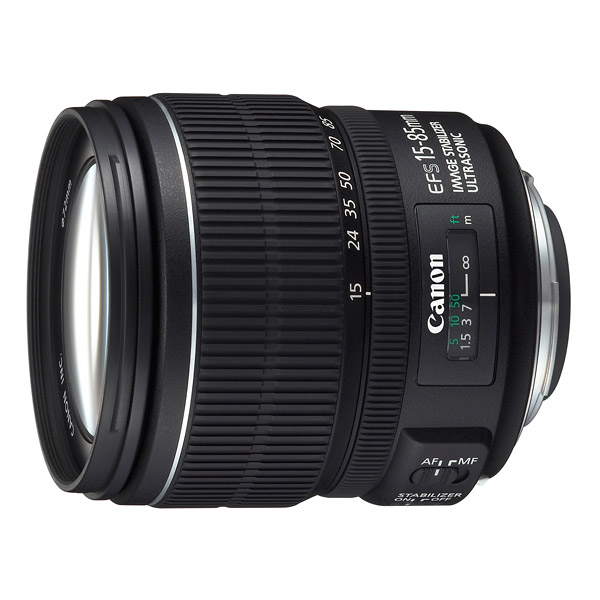 | Canon EF-S 15-85mm f/3.5-5.6 IS USM Pros: Robustness, sharpness even at extreme focal points and T.A., excellent color rendering, FAST and silent AF (it's ultrasonic!), characteristics comparable to the objectives of the L series, in short. Cons: Weight (it is felt after an hour of use), lampshade to buy separately, brightness (maybe f. 2.8-4.0 or a fixed f. 4.0 would have been ideal, but then the price would have been higher) and the price of the new that is certainly not affordable for everyone. Opinion: Great lens that defining "all-rounder" is a bit reductive. The A is a great focal excursion, precise and fast. F., silent and reliable stabilizer. The optical performance in terms of sharpness, contrast and chromatic rendering is excellent, absent the vignette. I often use it as a reportage lens even if it is not the top in terms of lightness, but quality demands this small sacrifice. The price of the new is a bit high, which is why I would recommend buying it used by people or trusted retailers. sent on March 03, 2017 |
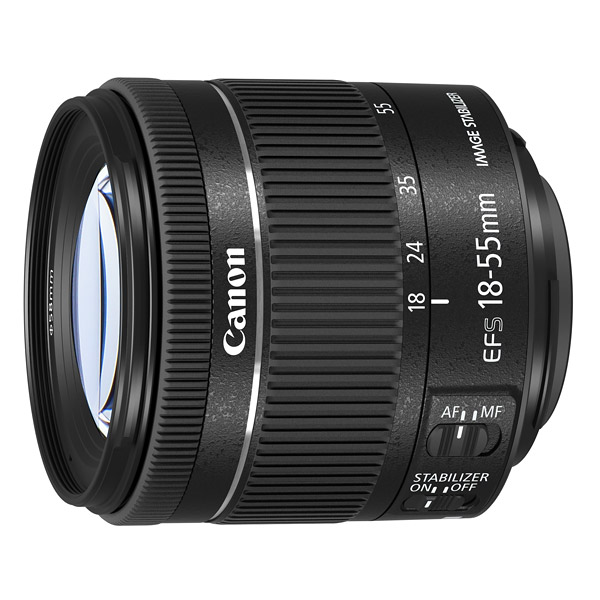 | Canon EF-S 18-55mm f/4-5.6 IS STM Pros: Only the lightness and the fact that in a kit with the body-chamber is to cost trifle Cons: dim Opinion: 3 NEW objectives purchased in kit with as many cameras, only one of which remained operational. Although very little I used because I prefer the 15-85, either expressed AF problems and the other mold problems despite the silica gel bag. They are there, in the drawer because it is not worth them cleaned or repaired. If you do not want to spend too much recommend the Tamron or Sigma hand in focus but with max fixed f open. 2.8. sent on March 03, 2017 |
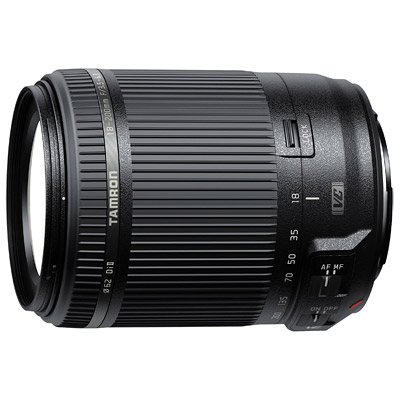 | Tamron AF 18-200mm f/3.5-6.3 Di II VC Pros: Compact, light, zoom range, lens hood, silent AF, quality / price ratio Cons: AF a bit 'slower in low light conditions, slight drop in quality at the edges wide open at the extreme focal lengths (diaphragm but just a little ...) Opinion: I this objective from a few days in place of 18-135 Canon that, apart from dust, had started to give me problems because to 18 mm. She reads to me instead of a focal length of 44 mm. and an aperture of f max. 5.0 instead of 3.5! The Tamron I find it a more incisive sleeping at all focal lengths than my old Canon 18-135, even at extreme focal where, however, suffers a bit in TA, as do the 18-135 Canon .. but just diaphragm to f. 5.0 to 18 mm. and f. 8.0 to 200 mm, and the problem goes away; AF and stabilizer instead they seem equivalent but less noisy Canon. It 'a decent all-rounder at a fairly affordable price You will not miss the all-rounder of the parent. In addition, compared to my old 18-135 Canon he has the serial lens hood and a closer macro position, even if only slightly. The front lens does not rotate whereby it is possible to mount a polarizer without problems. I took it as a travel goal, when you want to go light, and as a lens to events when it is useful to document a manifestazione and you do not have the time or the opportunity to be changing any lens or there is no space to move around and get different angles and shots. sent on March 03, 2017 |
 | Tamron AF 18-200mm f/3.5-6.3 Di II VC Pros: Compact, light, zoom range, lens hood, silent AF, quality / price ratio Cons: AF a bit 'slower in low light conditions, slight drop in quality at the edges wide open at the extreme focal lengths (diaphragm but just a little ...) Opinion: I this objective from a few days in place of 18-135 Canon that, apart from dust, had started to give me problems because to 18 mm. She reads to me instead of a focal length of 44 mm. and an aperture of f max. 5.0 instead of 3.5! The Tamron I find it a more incisive sleeping at all focal lengths than my old Canon 18-135, even at extreme focal where, however, suffers a bit in TA, as do the 18-135 Canon .. but just diaphragm to f. 5.0 to 18 mm. and f. 8.0 to 200 mm, and the problem goes away; AF and stabilizer instead they seem equivalent but less noisy Canon. It 'a decent all-rounder at a fairly affordable price You will not miss the all-rounder of the parent. In addition, compared to my old 18-135 Canon he has the serial lens hood and a closer macro position, even if only slightly. The front lens does not rotate whereby it is possible to mount a polarizer without problems. I took it as a travel goal, when you want to go light, and as a lens to events when it is useful to document a manifestazione and you do not have the time or the opportunity to be changing any lens or there is no space to move around and get different angles and shots. sent on March 03, 2017 |
 JuzaPhoto contains affiliate links from Amazon and Ebay and JuzaPhoto earn a commission in case of purchase through affiliate links.
JuzaPhoto contains affiliate links from Amazon and Ebay and JuzaPhoto earn a commission in case of purchase through affiliate links.May Beauty Be Everywhere Around Me